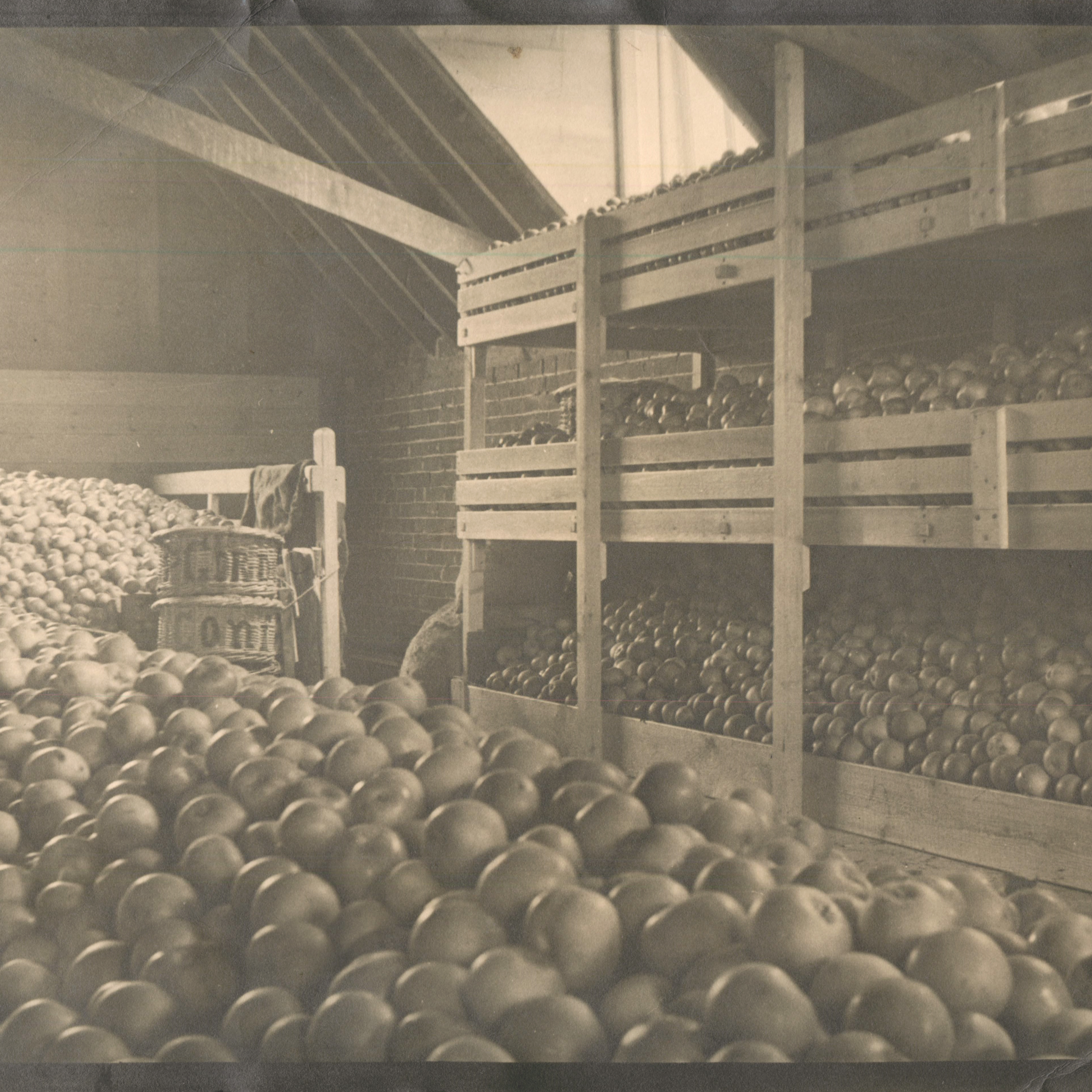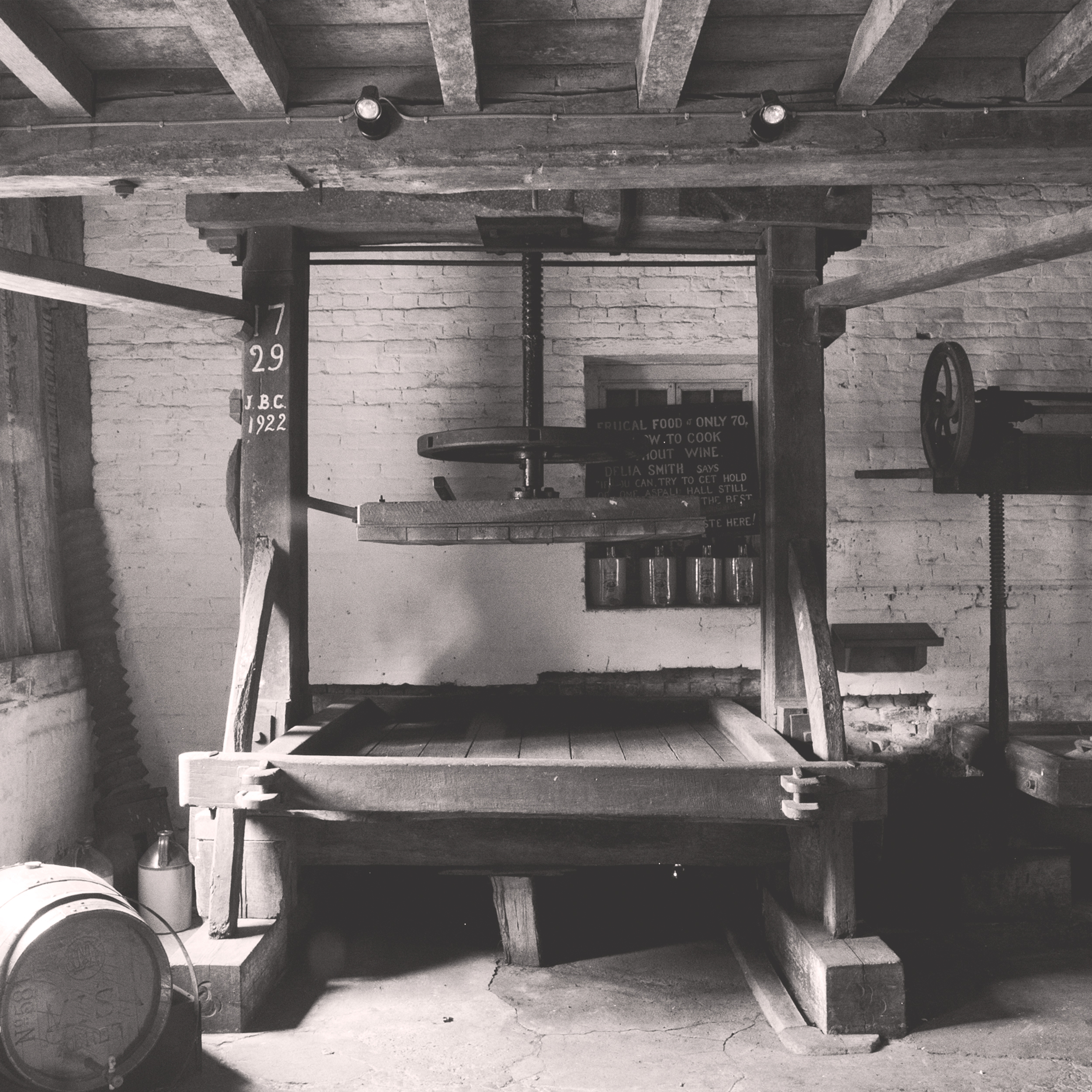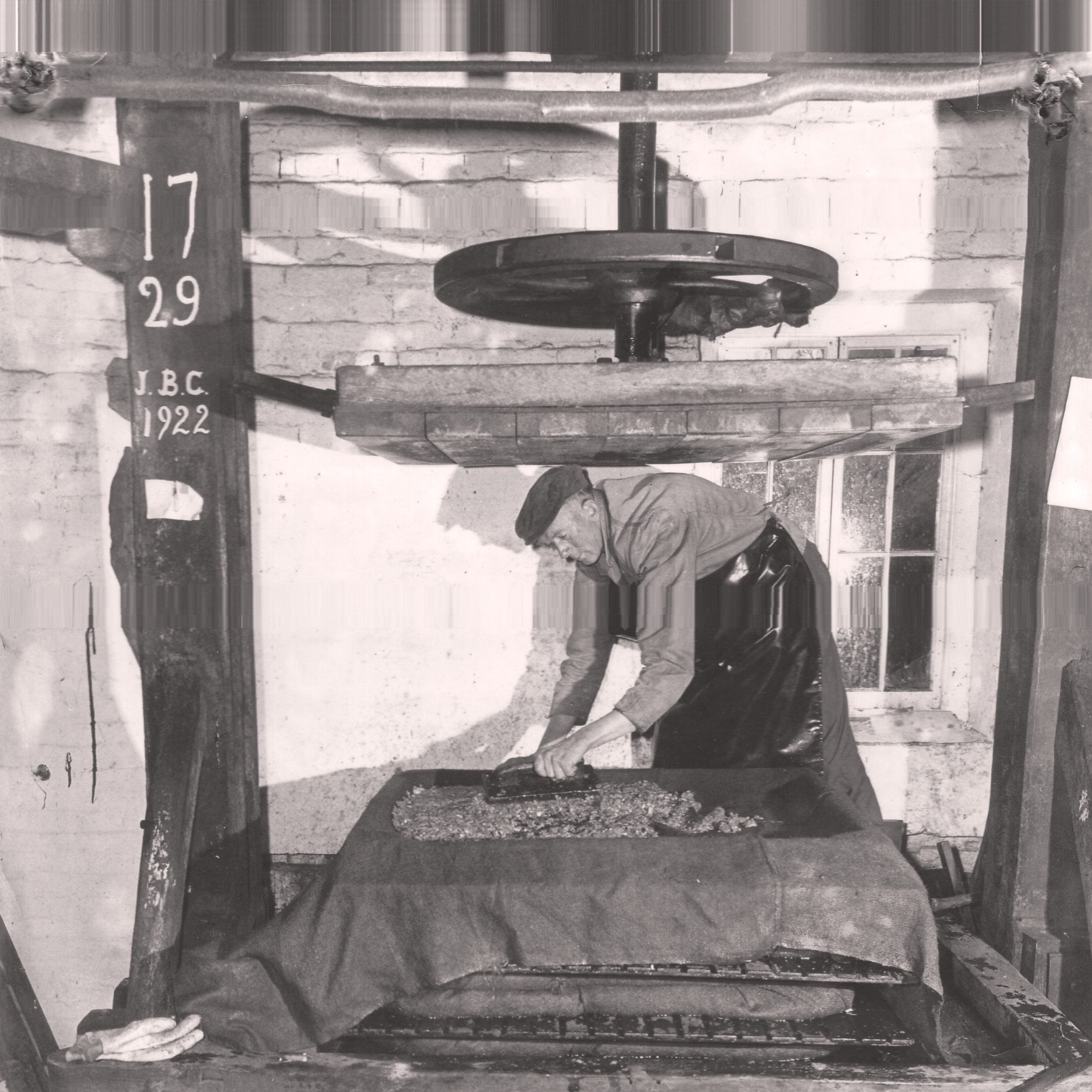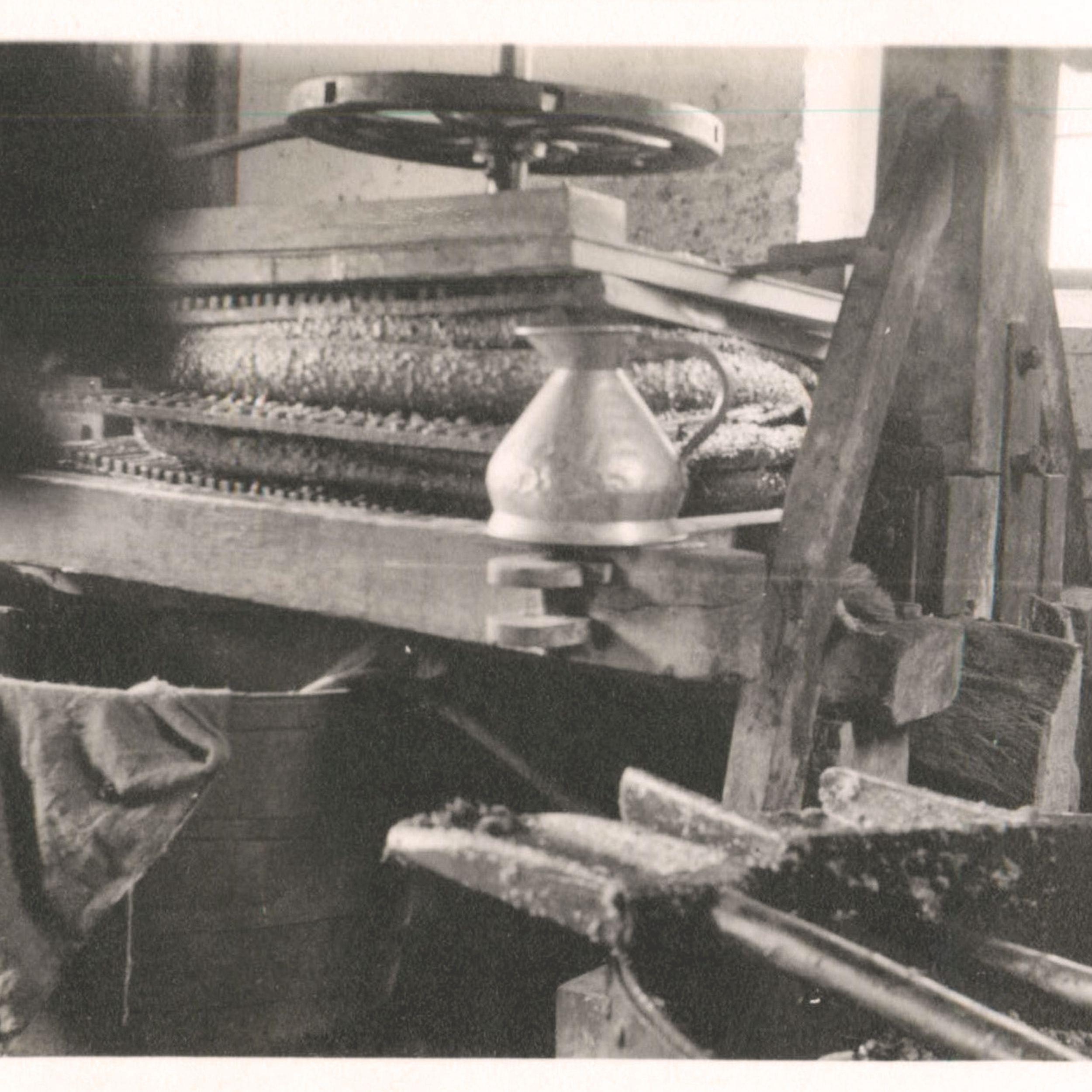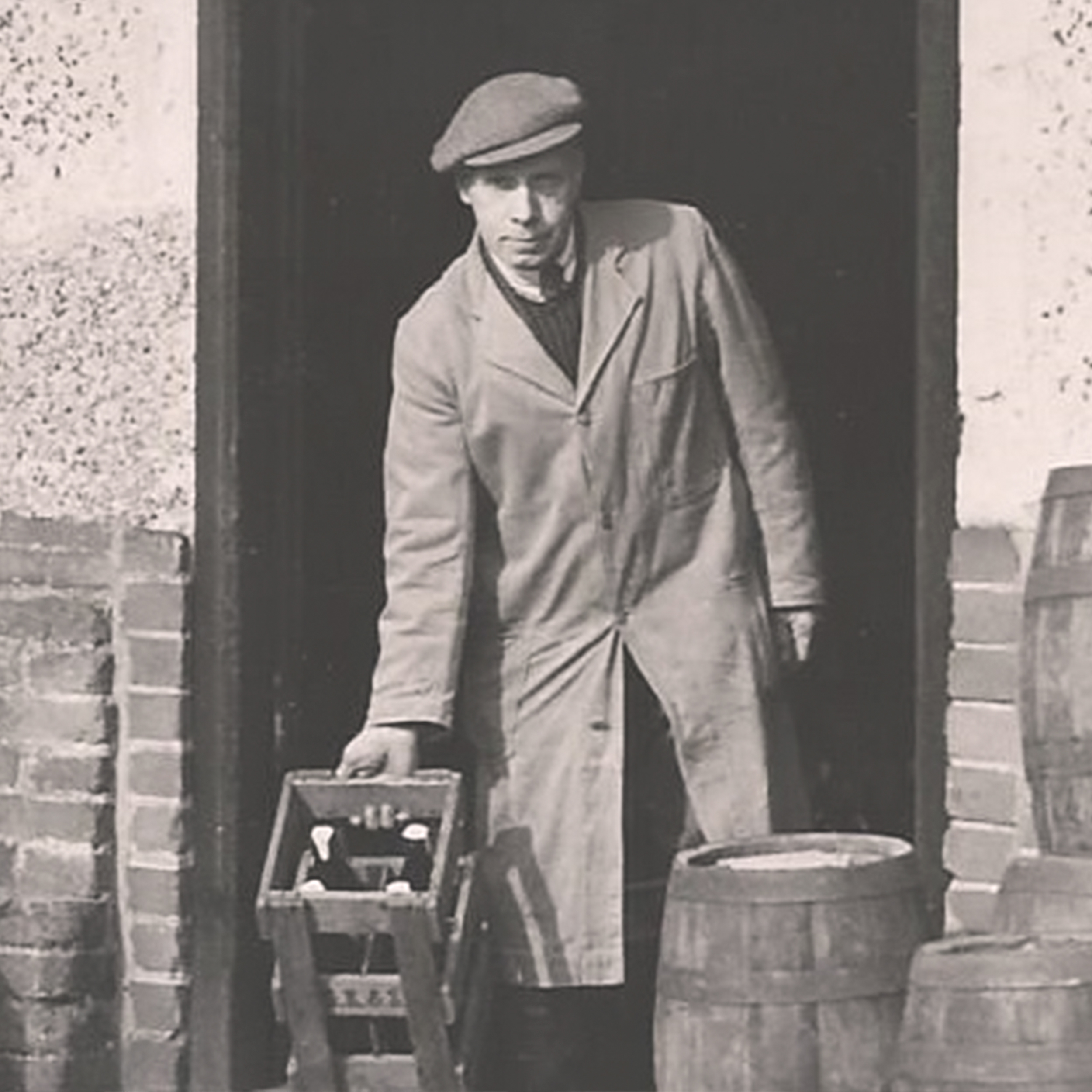Cyder Production (Then)
To make cyder, all you need to do is to squeeze the juice from the apple; the many 100’s of yeasts present on the skin will do the rest. All cyder up to the 20th century spontaneously fermented in this way, and this was no different at Aspall. In Autumn, apples were harvested and brought by hand to the Cyder House where they were stored ready for pressing for at least 2 weeks to allow the tannins in the skin to seep into the flesh. The apples were pre-blended by the cyder maker before pressing, and brought to the cyder house where they were ground to a pulp in a circular trough by a horse drawn stone wheel. The resulting mash was transferred to the press itself where layers of ‘cheeses’ wrapped in muslin cloth between wooden slats were piled on top of one another. The press was then wound down by hand and the resulting free run juice was caught in a barrel beneath the press before being transferred to oak barrels for fermentation.
The fermentation was long and slow, usually taking all winter as the temperature dropped and slowed down yeast activity. By the time the blossom appeared on the trees, the cyder was ready racked into clean barrels. Sugar was often added to give a second fermentation, making the cyder strong and aiding its keeping qualities. To indicate they were strong, and of higher quality, they were spelt with a “Y” rather than an “I” and at Aspall, we have only ever spelt with a “Y”. Double fermented cyders were often exported and were the mainstay of drinkers across the Empire before India Pale Ale took over in the 18th century.
Gallery
